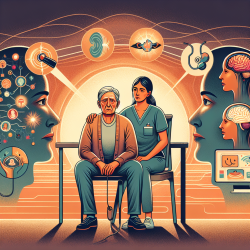Revolutionizing Osteoarthritis Rehabilitation: Data-Driven Approaches for Practitioners
Osteoarthritis (OA) is a prevalent cause of chronic pain and disability, affecting millions worldwide. The recent research article "Best Evidence Rehabilitation for Chronic Pain Part 5: Osteoarthritis" highlights innovative rehabilitation strategies that practitioners can adopt to improve patient outcomes. This blog post delves into these evidence-based interventions, emphasizing the importance of data-driven decisions in clinical practice.
Understanding Osteoarthritis and Its Challenges
OA primarily affects the knee, hip, and hand joints, leading to pain and reduced quality of life. Despite the lack of disease-modifying treatments, rehabilitation remains a cornerstone in managing OA symptoms. The research underscores the complexity of OA pain, influenced by both peripheral and central mechanisms, and highlights the need for a comprehensive approach to treatment.
Key Rehabilitation Strategies
The article outlines several effective rehabilitation strategies:
- Self-Management Programs: Encouraging patients to take an active role in managing their condition can lead to better outcomes. These programs focus on education, behavior change, and psychosocial coping skills.
- Exercise: Regular exercise is universally recommended for OA management. It helps improve pain, physical function, and mood while reducing the risk of secondary health issues. The research suggests a combination of aerobic and resistance exercises tailored to individual needs.
- Weight Loss: For overweight or obese patients, weight loss can significantly reduce OA symptoms. Combining dietary advice with exercise is recommended for optimal results.
- Cognitive Behavioral Therapy (CBT): CBT is beneficial for patients with psychosocial comorbidities, helping to manage pain and improve overall well-being.
- Adjunct Treatments: Manual therapy, thermal modalities, and transcutaneous electrical nerve stimulation (TENS) can be effective adjuncts to core treatments.
Promising Directions for Clinical Practice
The research highlights several promising directions for enhancing clinical practice:
- Improved Education Strategies: Addressing maladaptive pain-related beliefs through pain neuroscience education can enhance patient engagement in rehabilitation.
- Enhancing Resistance Training: Techniques like blood flow restriction training and adjunct disinhibitory interventions can improve muscle strength gains.
- Brain-Directed Treatments: Non-invasive brain stimulation and sensory discrimination training are emerging as potential interventions for OA pain.
Encouraging Further Research
While current evidence supports these strategies, further research is needed to refine and personalize rehabilitation interventions. Understanding the physiological underpinnings of treatment adherence and exploring new ways to enhance patient motivation are crucial areas for future study.
Practitioners are encouraged to integrate these evidence-based strategies into their practice, ensuring a holistic approach to OA management. By staying informed about the latest research and continuously evaluating treatment outcomes, clinicians can significantly improve the quality of life for their patients.
To read the original research paper, please follow this link: Best Evidence Rehabilitation for Chronic Pain Part 5: Osteoarthritis.










